Regarded as Asia’s latest cool kid on the block, Seoul attracts large numbers of visitors every year with its great shops, vibrant nightlife and delicious food.
It was even designated last year’s World Design Capital, which has prompted the construction of Dongdaemun Design Plaza by Zaha Hadid in central Seoul’s Jongno-gu district, to be completed later this year.
But what is most admirable about the South Korean capital is that, with all its new developments, it hasn’t lost its heart.
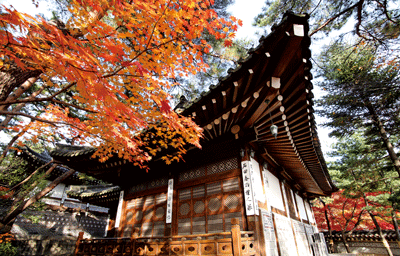
Many historical buildings may have been destroyed during the Korean War but century-old traditions are very much alive and incorporated into modern living.
With a little time to spare, you can experience this rich history alongside the city’s more contemporary side the next time you visit.
Here are 10 quintessential Seoul experiences you shouldn’t miss.
1 Cheonggyecheon
An 8.4km-long stream in the middle of downtown Seoul, this urban renewal project was once part of a drainage system and, later, a slum. By 1976, it was buried under concrete to make way for a highway. In 2003, the city’s then mayor and current South Korean president, Lee Myung-bak, decided to restore the waterway, a US$900 million project that involved ripping out the thoroughfare. Despite public criticism, it went ahead and after opening in 2005, very few people have complained about it.
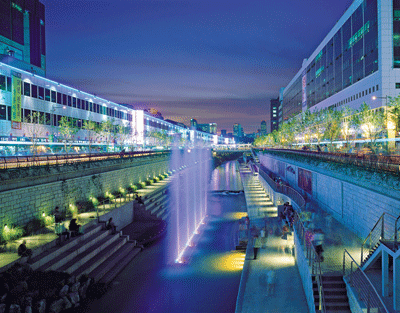
As well as bountiful flora, butterflies and fish to delight the eye, there are also art exhibitions and street performances to be enjoyed, and various structures along the banks showcasing the history of Seoul. Among these are the Gwangtong Bridge, believed to bring good luck to people who cross it, a colourful cloth wall made of fabrics from Dongdaemun’s fashion district, and an area that re-creates how local women once did their laundry. Walking tours or bus tours can be booked through Gwanghwamun Tourist Information Center (tel +82 2 735 8688).
2 Myeon gdong
Avid shoppers who have previously visited Seoul will no doubt be familiar with this perpetually busy downtown neighbourhood, but even if you don’t particularly enjoy shopping, it’s fun to come here for people watching and soaking up the energy. Other than mid- to high-end local and international brands, you’ll also find major Korean department stores, such as Lotte and Shinsegae. Restaurants and cafés are also in abundance, including Gogung (tel +82 2 776 3211; from Exit 10 of Myeongdong Station, walk to the right of Hotel Sejong until you reach a T-intersection. Turn left and walk about 60 metres), famous for bibimbap (rice with vegetables and beef, mixed with a mild red pepper paste). Notable landmarks in the area include the Chinese Embassy, UNESCO Hall, the 77-year-old Baroque-style Myeongdong Theater, and the oldest Catholic cathedral in Korea, Myeongdong Cathedral. The Bank of Korea Museum, a protected historic building, is also located here.
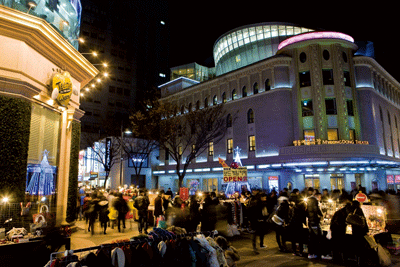
For most of the day, the main street and many of the smaller roads are pedestrianised, and every year from the end of March to mid-April, and in September, parades, music and dance performances, fashion shows and other spectacles mark the Myeongdong Festival. Sales also take place during these times.
3 Kimchi Academy House
No Korean meal is complete without this pickled staple, and if you have some time to spare, it’s well worth booking yourself into a kimchi-making class and trying your hand at making the ubiquitous side dish. The Kimchi Academy House is located on the fifth floor of the M Plaza Building in Myeongdong (31-1 Myeongdong 2-ga, Jung-gu). The academy is part of the Cultural Experience Center (tel +82 2 3789 7961), which also conducts lessons in traditional Korean arts and crafts.
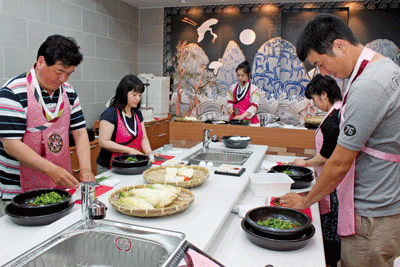
There are five sessions daily, each lasting about 80 minutes. Check before booking which class is being taught in your language – depending on the time, workshops are conducted in Japanese, Chinese,
English or Korean. Each participant is given a workstation with all the equipment and ingredients needed for the lesson, such as Chinese cabbage, salt, dried chili pepper, ginger and garlic, while an overhead LCD screen serves as a real-time visual aid. After making your own kimchi, the dish will be put in a plastic container and vacuum-sealed for the flight back home. A lesson costs KRW30,000 (US$28). Email [email protected] for information.
4 Samsung D’light
Come out of Exit 4 at Gangnam Station on Subway Line 2 to reach this digital playground dedicated to everything Samsung, located in one of the busiest downtown entertainment and business districts south of the Han River. This facility is a techie’s paradise, occupying three floors of a building owned by the global technology giant. Note that you cannot buy products here – instead, it is a showroom that gives you a sense of what a fully connected lifestyle looks like.
See the living room set up with internet TV, the kitchen with its digitally connected fridge and microwave, an area with all the latest mobile gadgets from MP3s to Galaxy Tabs, as well as video recorders and other devices.
Have your photograph taken and then digitally enhanced with the background and colour of your choice, for screening on a capture wall composed of 82 large-format display monitors. Or type a note into one of the laptops in the Text Zone and wait for it to appear on the “message floor”. Samsung D’light is open Monday to Saturday from 10am to 7pm. Samsung Electronics Building, Seocho-dong 1320-10, tel +82 2 2255 2277; www.samsungdlight.com
5 Nanta
Seoul brims with entertainment options, and catching one of the city’s top shows is a way to get to know and experience local culture. Nanta, one of the first non-verbal shows to hit the big time, is still going strong more than 13 years on. It combines traditional Korean drumbeats with a Western-style comedic stage show. The plot follows a day in the life of three chefs preparing for an evening wedding banquet. Set in the kitchen, the cooking crew must teach a new colleague, who happens to be the manager’s nephew, to find his way around the pots and pans. The troupe has two theatres in Seoul, one in Myeongdong and another at Star Six Jeong Dong Art Hall in Jung-gu, north of the Han River. There are many shows daily and box offices open one hour before each show. You may also call +82 2 739 8288 to make reservations but you can’t choose your seats on the phone. Tickets are priced at KRW40,000-KRW60,000 (US$36.5-US$55). If you join as a member, you can book online. For details, visit www.nanta.co.kr
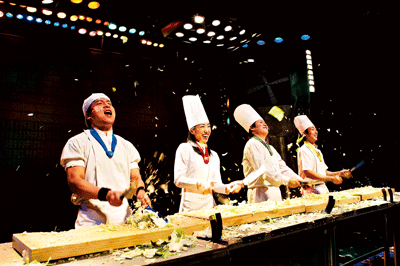
6 Itaewon
This famous expat area is located in Yongsan-gu district, in the centre of the city along the north bank of the Han River and served by Subway Line 6. Itaewon has a notable presence of US military officials because of the nearby Yongsan Garrison and the dining scene here is truly international, with popular haunts including Thai Orchid (736-9 Hannam-dong Yongsan, tel +82 2 795 3338) and deli, café, bar and club Macaroni Market (2/F Hannam Building, 737-50 Hannam 1-dong, tel +82 2 749 9181) – open until 2am and serving a brunch buffet on Sunday. Another characteristic of this neighbourhood is the underground malls filled with tailors eager to make you a suit, and great shops for second-hand and bargain clothing. Genuine leather goods can also be found here for rock-bottom prices.
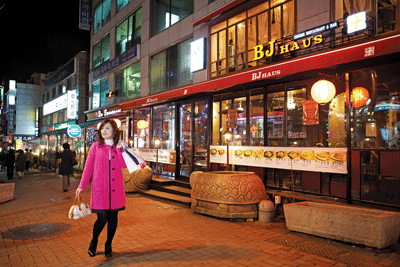
But perhaps what many visitors come here for is the nightlife. Some places can get a little rowdy at times, but there are also many establishments where you can have a safe and fun time. Follow the tracks of some of the fashionably dressed groups and you might be led to a cosy wine bar or pub, such as Three Alley Pub (www.3alleypub.com), nestled behind the Hamilton hotel. Many of the city’s gay bars are also located here.
7 Wellness Korean style
Korean ginseng is usually taken as a tonic or used as an ingredient in traditional Korean cuisine for its believed ability to facilitate blood circulation, strengthen the heart, boost the immune system and increase overall health. It has found its way into a series of body and facial treatments available at The Spa at Grand Hyatt Seoul, located in Namsan district, 10 minutes’ ride from the downtown area. As a polish (60 minutes/US$151), the herb in powdered form is mixed with ginseng milk and applied all over the body by a therapist using special loofah mitts. As a massage (60 minutes/US$146), ginseng oil is rubbed all over the body, which is then wrapped in linen to hasten the infusion.
Or try Chaum, an exclusive bio anti-ageing complex located in Cheongdam-dong in the swish Gangnam district. It offers a sophisticated wellness programme called TheraSpa, which combines eastern and western science to customise therapies. There are more than 70 programmes divided into three categories – lifestyle, for detoxification and boosting immunity, spa wellness, for relaxation and boosting energy, and medical. Spread over five floors, Chaum has steam rooms and saunas, indoor and outdoor pools, an outdoor meditation garden and a fully equipped gym with yoga and pilates sessions. Grand Hyatt: open 10am-10pm, http://seoul.grand.hyatt.com/hyatt/pure/spas/; hyatt.com. Chaum: open daily 10am-8pm, www.chaumlife.com
8 Yeouido
Called by some the “Manhattan of Seoul”, this island is the city’s finance hub and home to many sleek skyscrapers that are the headquarters of many local banks. There are not many tourist attractions here but it is still worth a visit, especially when getting there is so easy with the dedicated train station on Lines 3 and 5. At lunchtime, many of the office workers hang out at Yeouido Park, which was built in the late 1990s and is divided into four themed areas – Traditional Korean Forest, Grass Square, Culture Square and Nature’s Ecosystem Forest. At night, street stalls offering simple late suppers and soju (best described as Korean vodka, made with various grains including barley) begin to buzz once people have finished their overtime.
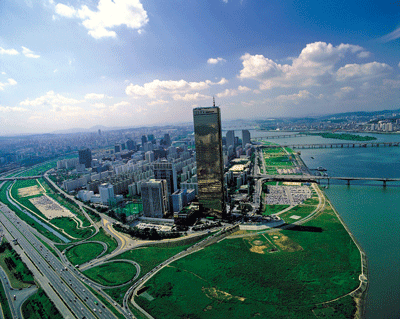
9 Dora Mountain Station
For many visitors to Seoul, a tour to the Demilitarized Zone (DMZ), a strip of land 4km wide and 248km long that serves as the buffer area between the two Koreas, is imperative. Most people have seen pictures of the little blue buildings in Panmunjom, where negotiations between the two sides still take place. There are also the incursion tunnels that the North Koreans allegedly dug to infiltrate the south but abandoned when their plan was exposed. These are now open to visitors.
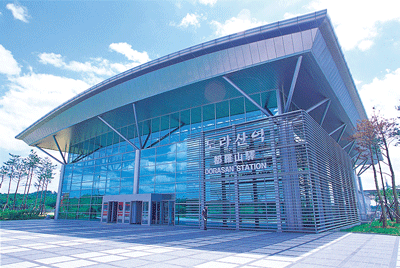
A less talked-about, but equally surreal part of the experience is the Dora Mountain Train Station, which was built for the cross-border Gyeongui-seon (Seoul-Sinuiju) Line that has never operated. It looks like a train station all ready to go, except there are no trains or staff. Visitors can help themselves at the immigration desk with the mock North Korean passport stamp – but don’t actually use it on your passport as it can get you in real trouble during future travel. Former US president George W Bush paid a visit here on February 20, 2002, attracting worldwide attention. A souvenir shop offers North Korean products, including whisky, if you dare.
Most hotels in Seoul would be able to refer you to credible agencies that operate DMZ tours, and a half-day experience with lunch is offered at an affordable KRW77,000 (US$70.7) by the International Cultural Service Centre (visit tourdmz.com).
10 Samcheonggak
One of the most visited green spots in Seoul is the beautiful forest of Bukaksan Mountain, north of the Blue House, residence of the South Korean president. This is also home to the iconic Samcheonggak, a complex composed of six traditional-style Korean houses. It has become a place where local arts and culture are preserved and practised. You can learn how to conduct a tea ceremony, tie traditional knots, wear hanbok (Korean costumes) and listen to classical Korean music performances.
Samcheonggak also houses a refined Korean restaurant, which serves royal cuisine as the emperor used to like it. Diners are treated to a cultural performance where musicians play old Korean songs as well as some Western tunes on traditional instruments. To get there, you can catch a shuttle bus at Seoul Plaza Hotel’s main entrance (Subway line 1, Seoul City Hall station, exit 6). Visit samcheonggak.or.kr
City of the future?
Incheon, with 2.76 million residents, is the country’s third most populated city after Seoul and Busan. It is part of the Seoul National Capital area and home to Incheon International Airport. Designated as a free economic zone, it has many ambitions, including the building of Songdo International Business District (IBD), a project of over 1,500 acres (607ha) of reclaimed land on the west coast contracted to world-renowned architecture firm Kohn Pedersen Fox (KPF). The residential portion of the plan will include buildings ranging from four to 65 stories providing over 20,000 living units for 60,000 residents. Facilities will include a central park, the 1.2-million-square-foot (111,484sqm) Convensia Convention Center, hotels, international schools, museums, a luxury retail mall and the Jack Nicklaus Golf Club Korea.
KPF president Paul Katz envisions that more new cities will be developed in the region and Songdo will be a model example. “There will be the need in Asia to build cities from scratch, the idea being there is such a great population with such great demands for improvements in the quality of life, it justifies building a new city. There aren’t many models and a lot of people who visit Songdo can learn from it,” Katz says.
“If you build [a city] from scratch, you will be able to develop it out of technologies of the future – more solar power, or it might be wind power, and maybe greater use of LED lighting.”
This “city of the future” will be unlike other cities in South Korea and even Asia. It will be very green and a place for work, life and play. The population it attracts, according to Katz, will likely be expatriates who have to travel a lot for their work – and the area’s proximity to the airport will be one of the biggest draws for these potential tenants.








